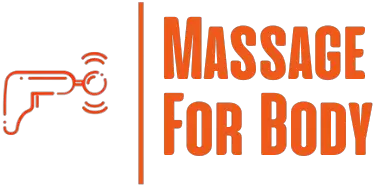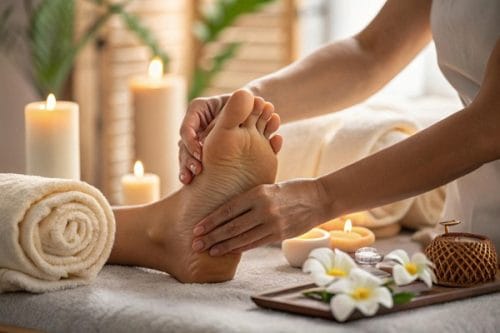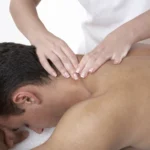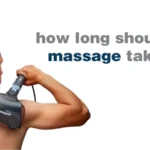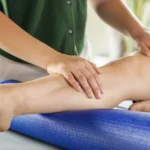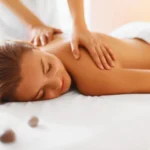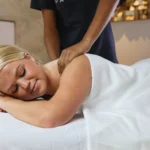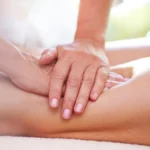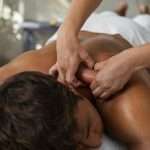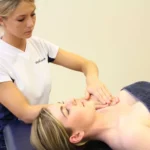There’s a moment in many reflexology sessions when something shifts—quietly, subtly, unmistakably. A knot of tension in the chest softens after a point on the arch is pressed. A dull headache lifts when the toes are worked. A surprising wave of calm rises not from the mind, but from somewhere deeper, as if the body has finally exhaled after holding itself together all day.
That moment is why reflexology has endured across cultures for thousands of years.
And it’s why people from New York to Singapore, London to Bangkok, keep returning to it—not as a luxury, but as a necessary recalibration in an overstimulated world.
As someone who studies global wellness practices for MassageForBody.com, I’ve seen reflexology become one of the most requested and misunderstood modalities. Reflexology isn’t simply a foot massage. It’s a structured technique of applying pressure to mapped points on the feet, hands, and ears—points believed to correspond with different systems of the body. While modern science continues to explore the mechanisms behind it, major health institutions acknowledge reflexology as a complementary therapy for stress, tension, and general well-being. The Cleveland Clinic notes that reflexology may help calm the nervous system and support relaxation, which aligns with what many people experience in practice.
To understand why this therapy resonates globally, you have to look beyond the surface.
Table of Contents
What Reflexology Actually Is
Reflexology is grounded in the idea that specific points on the feet, hands, and ears—known as “reflex zones”—correspond to organs, glands, and body systems. Applying pressure to these zones is believed to send signals through the nervous system to help the body self-regulate.
Although modern reflexology maps originated in the West through the work of physiotherapist Eunice Ingham, the broader concept is ancient. Similar foot-based therapies appear in Traditional Chinese Medicine, Thai healing traditions, and even Egyptian artwork.
Different global styles reflect different philosophies:
- Traditional Chinese reflexology integrates meridian pathways and Qi flow.
- Thai reflexology blends foot pressure with stretching techniques and wooden tools.
- Western reflexology uses a systematic “thumb-walking” method and detailed pressure maps.
Despite these variations, practitioners across cultures agree on one truth: the feet store stress patterns. A skilled reflexologist can often feel tension or sensitivity in a reflex zone before a client mentions any discomfort. This observation aligns with the National Institutes of Health classification of reflexology as a mind-body practice used to support stress management and overall well-being.

How Reflexology Works: Modern Physiology Meets Ancient Technique
Reflexology’s earliest explanations relied on energetic concepts—Qi, meridians, life force. But modern research helps explain its effects through a more physiological lens.
Nervous System Regulation
The feet contain thousands of nerve endings. Pressing reflex points sends signals through the peripheral nerves into the spinal cord and brain. Studies published in the Journal of Traditional and Complementary Medicine suggest reflexology can activate the parasympathetic nervous system—the part responsible for rest, repair, and digestion. This shift often explains the “wave of calm” many people feel during a session.
Sensory–Motor Feedback Loops
Reflexologists look for differences in texture, tenderness, warmth, or density in specific areas of the foot. These variations often match familiar stress zones—for example, sinus-related tenderness in the toes or digestive tension mirrored in the arch. This isn’t mystical; it reflects how the nervous system organizes sensation and tension patterns.
Circulation and Local Tissue Response
Applying pressure stimulates microcirculation, which helps warm the feet and increase blood flow to surrounding tissues. This contributes to the grounded, lighter feeling many people report afterward.
Stress Relief and Emotional Reset
The Complementary Therapies in Clinical Practice journal has documented reflexology’s potential to reduce perceived stress levels. Clients often notice improved breathing, reduced muscle guarding, and a calmer emotional state.
Reflexology Charts and Foot Maps
Most practitioners use a standardized reflexology chart to guide their work. These maps illustrate how different zones of the feet correspond to systems throughout the body—the toes to the sinuses and head, the arch to digestive organs, the heel to the pelvis, and the ball of the foot to the lungs and diaphragm.
A reflexology foot map doesn’t function as a diagnostic tool. Instead, it ensures consistent pressure patterns and helps explain why certain points feel tender or reactive: they often reveal areas where the body is holding tension or where the nervous system is overstimulated.

Does Reflexology Really Work?
One of the most common questions people ask is whether reflexology genuinely works or if the benefits are simply relaxation. Modern research offers a more nuanced picture. Reflexology isn’t a cure for medical conditions, and major health organizations make that clear. But evidence shows it can influence the nervous system, reduce perceived stress, and improve overall well-being.
Research published in the Journal of Traditional and Complementary Medicine found that targeted foot reflexology can activate parasympathetic activity—the body’s natural “rest and digest” mode. The Cleveland Clinic also notes that reflexology may promote circulation and tension relief.
The most consistent outcome across studies?
A profound downshift in stress levels—what many clients describe as the body “resetting.”
A Global Therapy With Deep Cultural Roots
Reflexology thrives globally because it adapts easily to different cultures and lifestyles.
- In Asia, reflexology is part of everyday life—quick, affordable, accessible.
- In Europe, it is often used in integrative health settings.
- In the United States, reflexology is popular among people seeking non-pharmaceutical stress relief and improved sleep.
- In Thailand, reflexology often overlaps with traditional Thai massage, blending footwork with rhythmic stretching.
Despite cultural differences, the intention remains universal: restore balance and reconnect the body with itself.
Is Reflexology Supported by Modern Science?
Scientific understanding of reflexology continues to evolve. While researchers don’t agree on every mechanism, several findings help explain why reflexology is effective for many people.
Studies in Complementary Therapies in Clinical Practice have shown reductions in stress hormones after reflexology sessions. Other research suggests that stimulating the feet may influence brain regions connected to emotion and autonomic regulation.
Organizations such as the National Institutes of Health classify reflexology as a complementary practice—generally safe, potentially helpful, and most valuable when used for stress, sleep, and emotional balance.
In other words, reflexology is not a “miracle therapy,” but its effects on the nervous system are measurable and meaningful.
What to Expect During a Reflexology Session
A reflexology session is surprisingly calming from the moment you sit down. Unlike a full-body massage, you remain mostly clothed. The practitioner begins by warming the feet—gently mobilizing joints, stimulating circulation, and preparing the tissue.
Then the real work begins.
A trained reflexologist presses specific points using thumbs, fingers, or tools. They look for sensations such as:
- grittiness or “crystals”
- sudden tenderness
- tension lines
- temperature differences
- referred sensation elsewhere in the body
Clients often feel echoes of sensation behind the eyes, in the stomach, or along the lower back. This sensory response aligns with reflexology’s focus on neural pathways.
Most people fall into deep relaxation within minutes. Breathing slows, the nervous system shifts, and the mind quiets.

Using Reflexology at Home
You don’t need special training to incorporate reflexology into your daily life.
A simple five-minute practice can ease nighttime tension:
- Warm your feet with a short bath or towel.
- Sit comfortably and bring one foot onto the opposite knee.
- Use your thumb to apply slow, steady pressure on the arch, heel, and toe pads.
- Hold each point for 5–7 seconds to allow the nervous system to register the signal.
If you want to combine reflexology with soft-tissue work, here’s a guide on how to give a good foot massage for deeper relaxation.
For people who enjoy tools, learning how to use a foot massager can extend the benefits between sessions.
Some clients also explore complementary approaches like massage for neuropathy to support foot comfort.
Others pair reflexology with recovery techniques such as how to use massage cups or gentle lymphatic drainage massage for circulation and stress relief.
Why Reflexology Resonates Today
Modern life fragments our attention and overloads the nervous system. Stress accumulates silently in the jaw, shoulders, diaphragm—and in the feet.
Reflexology reconnects the dots.
It allows the body to communicate through sensation rather than thought. It offers a non-pharmaceutical way to soften stress, regulate breathing, and restore balance.
It doesn’t promise miracles. It offers something more realistic and sustainable: a quiet reset.
The Takeaway: Reflexology Is a Conversation, Not a Cure
Reflexology doesn’t diagnose illness or replace medical care. It creates a dialogue between pressure and release, sensation and awareness, nervous system and mind.
In a world that rarely slows down, reflexology gives the body what it’s been quietly asking for—attention, balance, and space to recalibrate.
Frequently Asked Questions
Does reflexology work?
Research cited by the Cleveland Clinic and journals such as Complementary Therapies in Clinical Practice suggests reflexology may support stress reduction, nervous system regulation, and general well-being.
Is reflexology painful?
Some points may feel tender, but reflexology should not be painful. A good practitioner adjusts pressure to your comfort level.
What’s the difference between reflexology and regular foot massage?
A foot rub or Swedish massage focuses on muscles, whereas reflexology follows mapped pressure points.
How long is a session?
Most last 30–60 minutes.
Is reflexology safe?
Generally yes, but those with active foot injuries or circulation issues should avoid it. Pregnant individuals should see trained prenatal reflexologists.
Will I feel anything afterward?
You might feel lighter, calmer, or slightly tender—similar to being sore after a massage.
Editorial Standards
Reviewed November 2025 by John Winter, Wellness Editor
MassageForBody.com follows strict guidelines to ensure accuracy and trustworthiness. All content is:
- Based on reputable medical sources
- Supported by peer-reviewed research
- Written by experienced wellness contributors
- Periodically reviewed for updates
This article is for educational purposes only and does not replace professional medical advice.
🌿 Related Articles
🔗 Why Am I Sore After a Massage?
🔗What Is Traditional Thai Massage? The Ultimate Guide to Thai Bodywork
🔗Swedish Massage: The Timeless Treatment for Relaxation and Renewal
📚 References
- Cleveland Clinic – Reflexology: What It Is, and Does It Work?
- National Institutes of Health – NCCIH
- Embong, N.H. et al. “The Effects of Foot Reflexology on Physiological Parameters.” Journal of Traditional and Complementary Medicine (2015).
- Wyatt, S. et al. “Reflexology for Stress Reduction.” Complementary Therapies in Clinical Practice (2020).
- Healthline: “What Is Reflexology?”
⚠️ Disclaimer:
This article is for informational purposes only and does not constitute medical advice. Always consult with a licensed healthcare provider or certified massage therapist before beginning any new treatment, especially if you have pre-existing health conditions or concerns.
